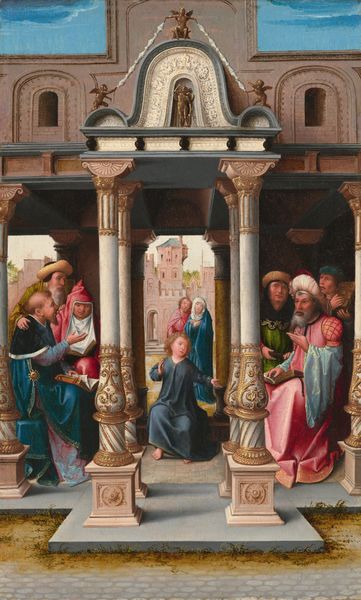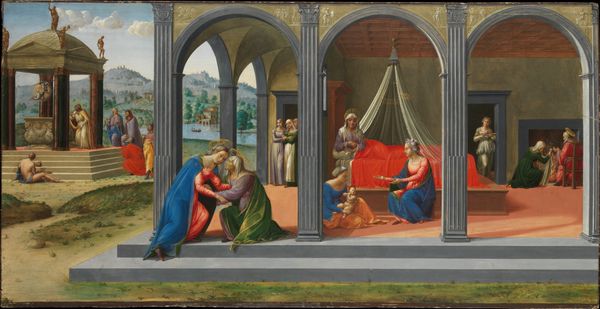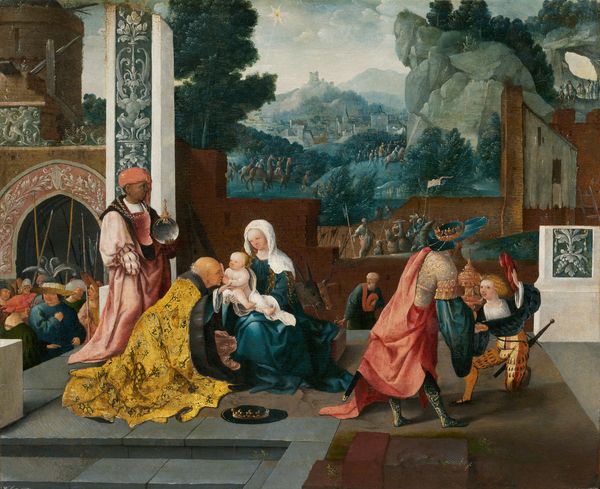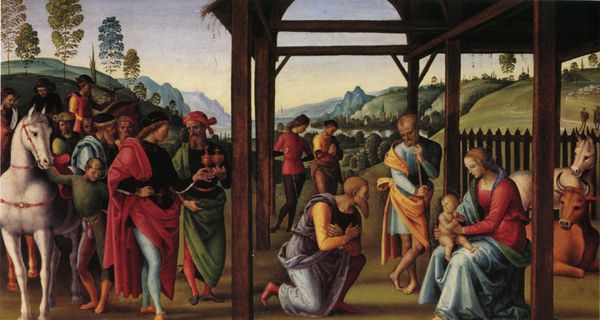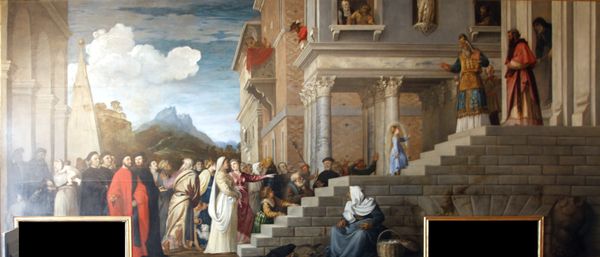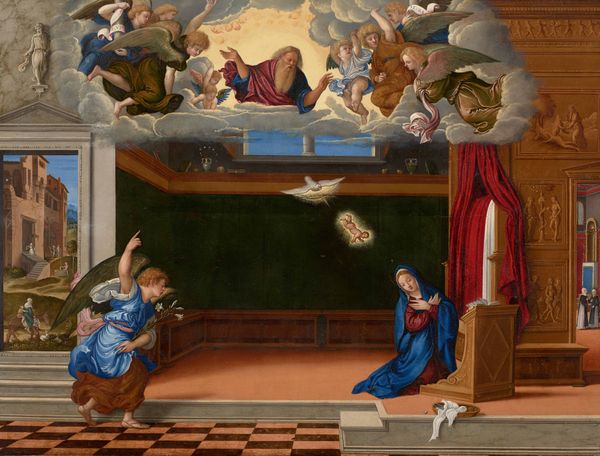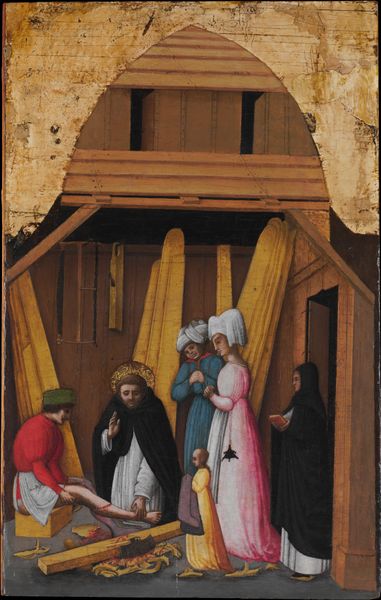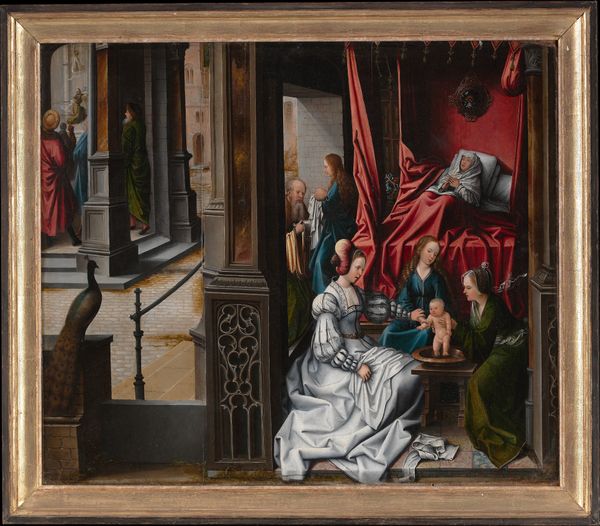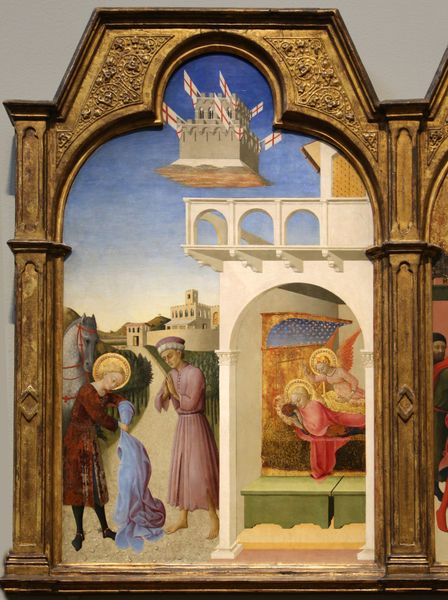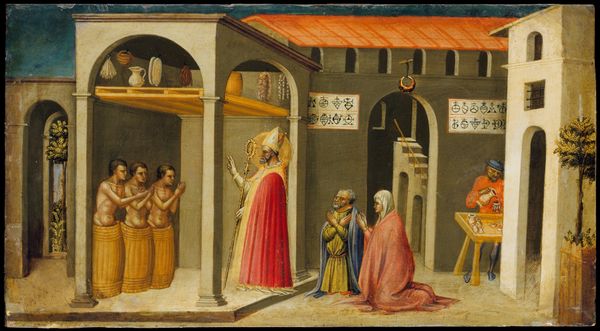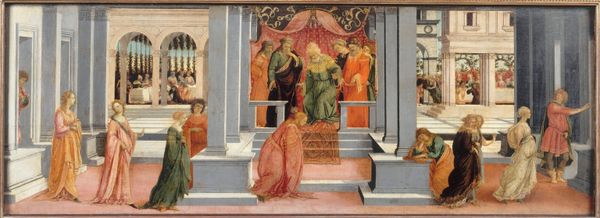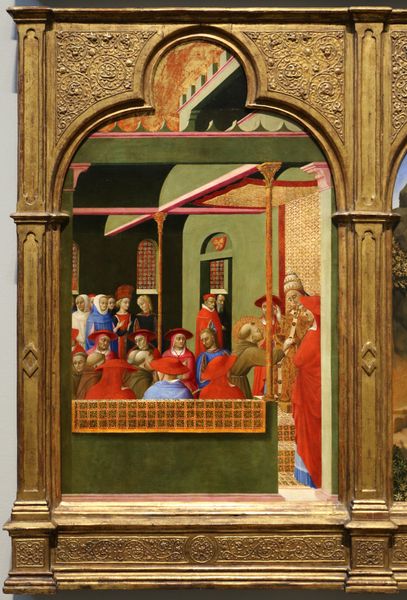
Scenes from the Life of Saint John the Baptist 1490 - 1495
0:00
0:00
tempera, painting, sculpture
#
narrative-art
#
tempera
#
painting
#
perspective
#
figuration
#
sculpture
#
genre-painting
#
history-painting
#
italian-renaissance
#
italy
#
early-renaissance
Dimensions: 74 × 150.4 cm (29 3/16 × 59 3/16 in.)
Copyright: Public Domain
Editor: Right, so this tempera on wood panel is entitled "Scenes from the Life of Saint John the Baptist," made by Bartolomeo di Giovanni around 1490-1495. It's quite striking how he fits so many scenes into one composition, almost like a stage set. What can you tell me about the cultural significance of a piece like this? Curator: What’s fascinating is how it reflects the rising popularity of narrative painting during the Early Renaissance. Religious narratives became vehicles to convey not only theological ideas but also societal values and power structures. Think of this work as less of a devotional piece for private contemplation and more of a public proclamation of civic identity. What do you notice about the figures, especially their costumes and settings? Editor: I see very fashionable clothes, and what looks like a fairly well-to-do household, perhaps? Curator: Precisely. Giovanni wasn’t simply illustrating scripture; he was embedding these biblical scenes within a contemporary Florentine setting. By dressing the figures in the clothing of the time and situating the events in recognizable architectural spaces, the artist bridges the gap between the sacred and the secular, inviting the viewer to identify with the narrative and its moral implications. It almost naturalizes a certain kind of wealth as part of religious experience. Editor: That makes sense. So it’s about presenting an idealized version of society alongside the religious story. Did the placement of this kind of painting matter? Curator: Absolutely. While its original location remains debated, similar works would have been displayed in locations readily accessible to a wide audience, like chapels and public buildings. That visibility reinforced the socio-political messages embedded in the narrative. What is more, these works affirmed the values and legitimacy of the patron class funding their production and placement. Editor: So much more than just a story about Saint John. It’s fascinating to consider how art shapes public opinion and values. Thanks for that new perspective! Curator: Indeed! It's always enlightening to reconsider artworks like these within the framework of power and representation.
Comments
No comments
Be the first to comment and join the conversation on the ultimate creative platform.
